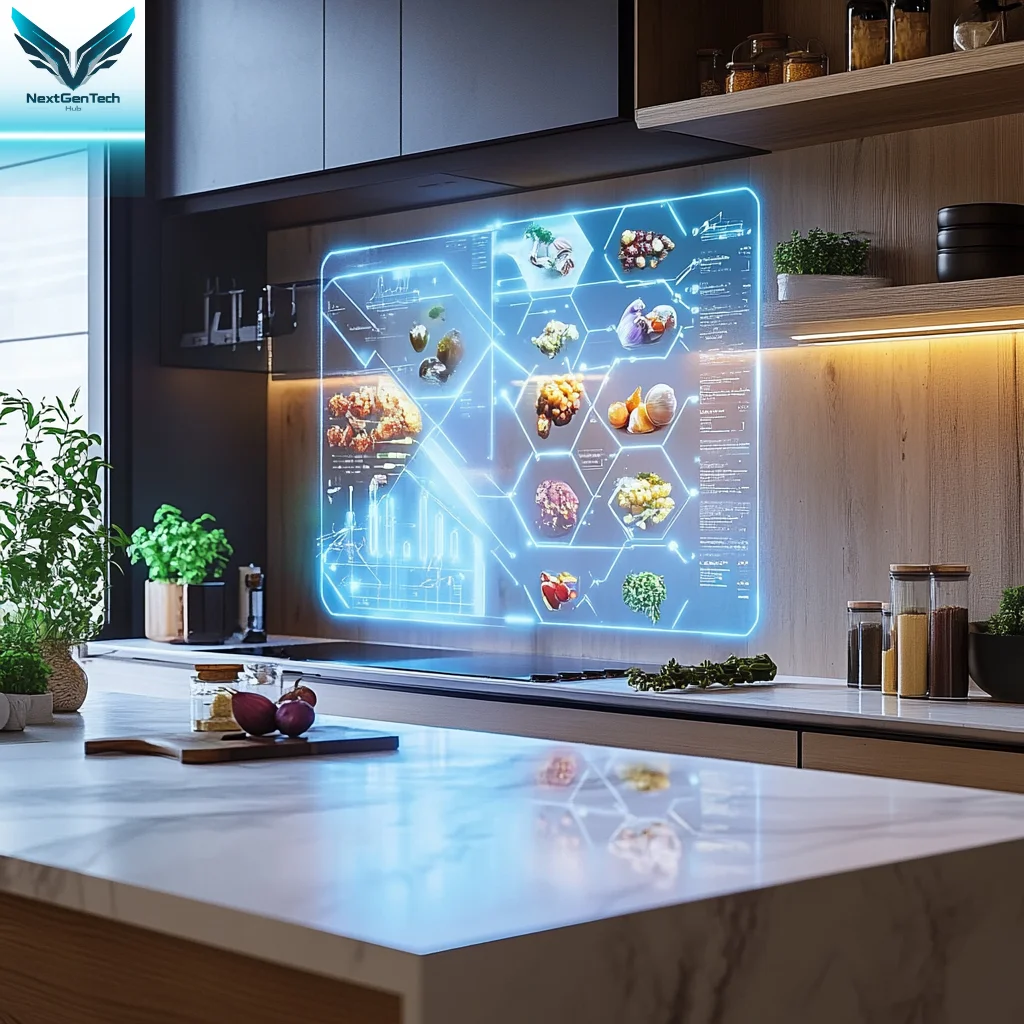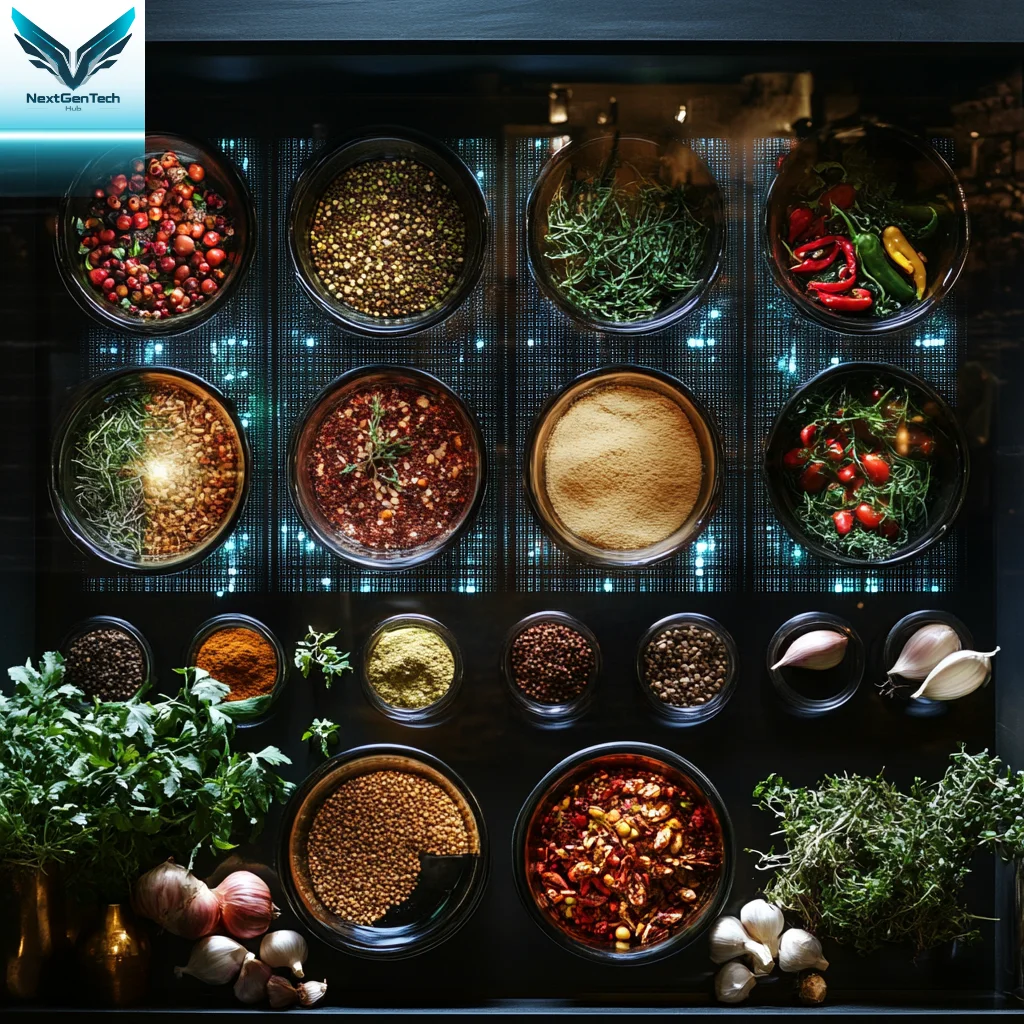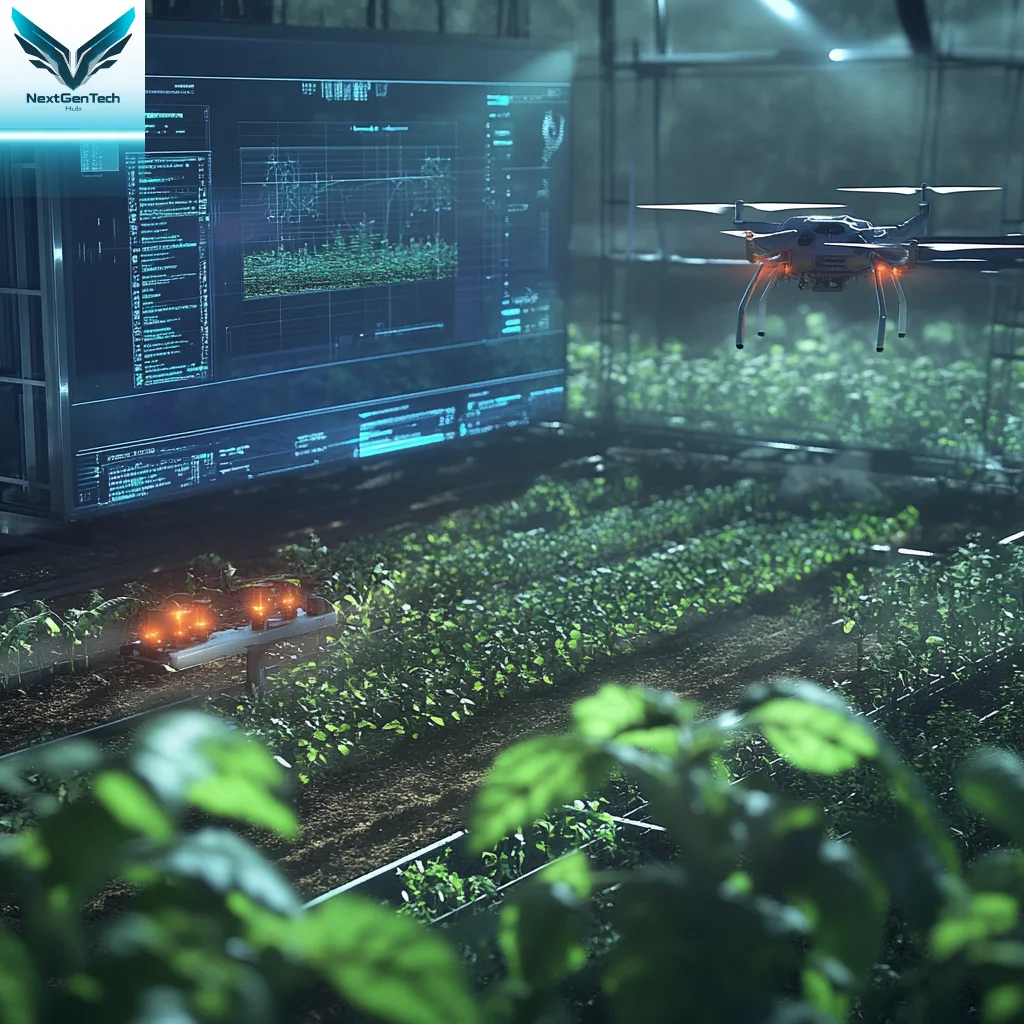
Artificial intelligence (AI) has left no stone unturned in shaping modern industries—from finance to healthcare and education. However, one area where AI’s transformative power is often overlooked is the culinary world. While we often think of cooking as a deeply personal, creative process, AI is proving that it can significantly augment human creativity by introducing new epic flavors that we might never have imagined.
In this in-depth article, we’ll explore how AI is changing the way we discover flavors, from creating new recipes to enhancing personalization in food experiences. Along the way, we’ll look at specific examples of AI-powered food innovation, share real statistics, and provide insights into products that are already on the market. By the end, you’ll understand why AI isn’t just a futuristic concept in the kitchen—it’s a key player in shaping the flavors of tomorrow.
Table of Contents
- 1. Introduction: The Role of AI in Food Innovation
- 2. How AI Creates New Flavors: A Step-by-Step Guide
- 3. Real-World Examples of AI-Generated Flavors
- 4. AI-Driven Personalization in Culinary Experiences
- 5. Statistics: The Growing Role of AI in the Food Industry
- 6. AI Tools for Flavor Discovery: What You Can Use
- 7. How AI is Influencing the Food Supply Chain
- 8. AI-Enhanced Flavor Products: Latest Offerings
- 9. Challenges and Ethical Considerations of AI in Food
- 10. Conclusion: The Future of Flavors with AI
- FAQs
1. Introduction: The Role of AI in Food Innovation
The culinary world is no stranger to experimentation, but AI is taking food innovation to an entirely new level. For centuries, chefs and food scientists have relied on their intuition, palate, and understanding of chemistry to create new recipes. AI, however, can process massive amounts of data in ways that no human can. It can analyze flavor compounds, predict successful ingredient combinations, and even consider factors like cultural preferences or dietary needs.
2. How AI Creates New Flavors: A Step-by-Step Guide
Step 1: Analyzing Flavor Compounds

At the heart of AI’s ability to create new flavors is its capacity to analyze and map flavor compounds. Every ingredient has a unique chemical structure that determines its taste. For example, the sharpness of onions comes from sulfur compounds, while vanilla’s sweetness is derived from its organic compounds.
Using machine learning algorithms, AI systems can analyze thousands of ingredients to determine which flavor molecules pair well together. This process is akin to flavor mapping, where AI identifies overlapping chemical characteristics that might make two ingredients work in harmony.
Example: IBM’s Chef Watson was one of the first AI systems to pioneer this approach. Chef Watson suggests novel ingredient combinations by understanding which flavor molecules complement each other at a molecular level.
Step 2: Predicting Consumer Preferences

AI doesn’t just rely on chemistry—it also takes human preferences into account. By analyzing vast datasets that include user reviews, social media discussions, and even sales trends, AI can predict what consumers will enjoy. This level of insight goes beyond what a single chef or food scientist could ever achieve.
Example: Companies like Spoonshot use AI to study consumer preferences in real-time, tracking everything from seasonal trends to long-term dietary shifts. This allows businesses to stay ahead of the curve in flavor development.
Step 3: Cultural and Dietary Considerations

One of AI’s strengths is its ability to cater to diverse cultural tastes and dietary needs. For example, AI can be used to develop flavor combinations for specific cuisines, whether it’s spicy Asian dishes or rich Mediterranean meals. Additionally, AI can cater to dietary restrictions—be it vegan, gluten-free, or keto—while still creating exciting new flavors.
3. Real-World Examples of AI-Generated Flavors
AI-generated flavors are no longer a futuristic concept—they are here today. Companies around the world are using AI to push the boundaries of what’s possible in food. Here are a few notable examples:
Impossible Foods and Plant-Based Meat Alternatives

AI played a crucial role in developing Impossible Foods’ famous plant-based burger, which mimics the taste and texture of real beef. By analyzing plant proteins at a molecular level, AI helped create a burger that not only tastes like meat but also “bleeds” thanks to its heme compound.
- Product Example: The Impossible Burger 2.0 ($6.99 for a two-pack) has become a best-seller and continues to innovate with AI-driven improvements to its formula.
NotCo’s AI “Giuseppe”

Chilean food tech company NotCo uses its AI system, named “Giuseppe,” to create plant-based alternatives to milk, mayonnaise, and even ice cream. NotCo’s AI analyzes animal products at a molecular level and identifies plant-based alternatives that can replicate their taste and texture.
- Product Example: NotMilk ($4.99 per liter), a dairy-free milk alternative, has been praised for its uncanny similarity to cow’s milk.
MeliBio’s AI-Generated Honey
MeliBio uses AI to produce honey without bees. By analyzing the molecular structure of natural honey, MeliBio replicates its composition using plant-based ingredients. This AI-driven innovation offers a sustainable alternative to traditional honey production.
- Product Example: MeliBio Plant-Based Honey ($9.99 for 12 oz) is now available, offering a cruelty-free option that doesn’t compromise on taste.
4. AI-Driven Personalization in Culinary Experiences
Beyond creating new flavors, AI is revolutionizing how we experience food through personalization. Thanks to machine learning, AI can offer customized food experiences that cater to individual tastes, dietary needs, and even health goals.
Personalized Meal Plans

AI can analyze a person’s food preferences, allergies, and health data (such as glucose levels or fitness goals) to generate meal plans that not only meet dietary requirements but also offer exciting and unexpected flavor combinations.
- Example: The NutriSense AI-powered platform uses real-time health data to suggest personalized meal plans that balance nutrition with flavor.
Restaurant Personalization

Restaurants are also leveraging AI to offer more personalized dining experiences. By analyzing customer preferences, AI systems can recommend dishes that are tailored to individual tastes or suggest wine pairings that complement a specific meal.
5. Statistics: The Growing Role of AI in the Food Industry

AI’s impact on the food industry is growing rapidly, as more businesses embrace its potential. Let’s look at some key statistics that highlight AI’s role in transforming flavor discovery and personalization:
- AI Market in Food: According to a 2022 report from Market Research Future, the global AI in food and beverage market is expected to grow from $3.07 billion in 2021 to $29.94 billion by 2027, with a compound annual growth rate (CAGR) of 45.4%.
- Consumer Interest: A study by IBM found that 78% of consumers are open to trying AI-generated foods, signaling growing consumer acceptance of AI-driven culinary innovation.
- Flavor Innovation: In North America, 65% of food companies are actively exploring AI for flavor development and product innovation.
The future of food, driven by AI, is not just a passing trend—it’s an industry-shaping force.
6. AI Tools for Flavor Discovery: What You Can Use

If you’re interested in discovering new epic flavors using AI, several powerful tools are available to help you experiment and create unique culinary experiences:
- FlavorGraph: This AI tool uses machine learning to recommend novel ingredient combinations by analyzing flavor chemistry and ingredient synergies.
- Chef Watson by IBM: This AI-powered platform was designed to help chefs create unique flavor pairings that push the boundaries of traditional cuisine.
- Plant Jammer: This AI-powered app allows home cooks to input the ingredients they have on hand and receive AI-generated recipes with innovative flavor profiles.
Each of these tools opens up new possibilities for chefs, food enthusiasts, and home cooks alike, offering a data-driven approach to flavor discovery.
7. How AI is Influencing the Food Supply Chain
AI’s influence extends beyond flavor discovery—it’s also revolutionizing the food supply chain. AI can analyze supply chain data to predict shortages, optimize sourcing, and even reduce food waste by suggesting ways to repurpose ingredients.
Sustainable Sourcing

Companies are using AI to identify more sustainable sources of ingredients. By analyzing data on farming practices, environmental impact, and supply chain efficiency, AI helps businesses make informed decisions about where to source their ingredients.
Reducing Food Waste

AI is also playing a key role in reducing food waste. By analyzing patterns in food consumption and expiration, AI systems can predict demand more accurately, preventing overproduction and minimizing waste.
8. AI-Enhanced Flavor Products: Latest Offerings
As AI continues to make waves in the culinary world, new AI-enhanced products are hitting the market. Here are a few recent examples:
- Impossible Sausage: Building on the success of its plant-based burger, Impossible Foods has introduced AI-enhanced plant-based sausage that mimics the taste and texture of pork sausage. Price: $8.99 for a 14 oz pack.
- NotBurger by NotCo: Another AI-powered innovation from NotCo, the NotBurger ($5.99 for a 2-pack) offers a plant-based alternative to traditional beef burgers with AI-driven flavor enhancements.
- Clara Foods’ AI-Enhanced Egg Whites: Clara Foods uses AI to create animal-free egg whites, offering a sustainable alternative to traditional egg products. Price: $7.99 for 12 oz.
9. Challenges and Ethical Considerations of AI in Food

Despite the excitement surrounding AI’s role in flavor discovery, there are also ethical considerations to keep in mind. For example, how do we ensure that AI-generated flavors respect cultural traditions and dietary preferences? Additionally, there is the question of data privacy—how much personal data should consumers share to receive personalized meal plans?
Cultural Sensitivity
While AI can create exciting new flavors, it’s essential that these innovations respect the cultural significance of traditional cuisines. Chefs and food companies should work in tandem with AI to ensure that these new creations honor culinary traditions.
Data Privacy in Food Personalization
When using AI-driven meal planning services, consumers often share sensitive health data. Companies must prioritize data privacy and ensure that this information is used responsibly and securely.
10. Conclusion: The Future of Flavors with AI

Artificial intelligence is transforming the way we discover and experience flavors. From creating new combinations of ingredients to personalizing meal plans based on individual preferences, AI is opening doors to culinary possibilities we’ve never seen before. As AI technology continues to evolve, we can expect even more new epic flavors to emerge—flavors that push the boundaries of tradition, cater to personalized needs, and offer healthier, more sustainable options.
Whether you’re a home cook looking to spice up your meals or a business seeking to innovate in the food industry, AI is here to help you explore a world of new culinary adventures. The future of food is bright, bold, and full of epic flavors—thanks to AI.
FAQs
Q1: How does AI create new flavors?
AI analyzes flavor compounds, ingredient chemistry, and consumer preferences to suggest innovative flavor combinations.
Q2: Can AI-generated recipes cater to dietary restrictions?
Yes, AI can customize recipes based on dietary needs, ensuring that the flavors are both exciting and suitable for various restrictions.
Q3: What are some AI-powered food products on the market?
Examples include the Impossible Burger, NotMilk, and Clara Foods’ animal-free egg whites—all created with the help of AI.
Q4: Is AI being used for food sustainability?
Yes, AI is helping reduce food waste and promote sustainable sourcing by optimizing supply chains and predicting demand more accurately.
Q5: Can I use AI to discover new recipes at home?
Absolutely! AI-powered tools like Plant Jammer and Chef Watson are available to help home cooks explore new flavor combinations.
